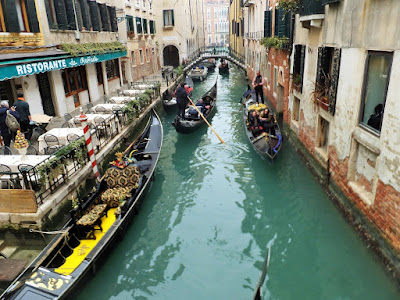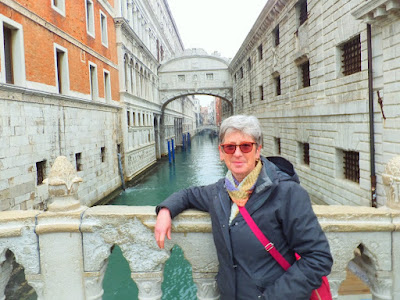 |
| Prato della Valle in Padua is one of Europe's largest squares. Constructed atop a pesky swamp, it is considered to be a great feat of architectonics. |
We've made the city of Padua our base for the northern Italy part of our recent trip. Its proximity to Venice (just a half-hour by train) is one factor, but Padua has a charm and heritage that rivals its more famous neighbor.
 |
| Kids! Stop pulling on the lion's ears. |
 |
| The University of Padua's faculty honored on this wall and ceiling include Galileo Galilei. (Fun fact: Copernicus was a student here.) |
Padua, or Pavlova, is located on the Bacchiglion river. The university here was founded in 1222 and is the world's fifth-oldest continuously operating university.
 |
| Orto Botanico di Padova is often called the original botanical Garden. |
Padua's botanical garden, the Orto Botanico di Padova is the world's oldest academic botanical garden. It was established in 1545 by the Venetian Republic for the purpose of growing medicinal plants. In the winter, the exterior gardens aren't in bloom, however the greenhouses are a treat. Here, we pass through Earth's habitats, from tropical to desert.
 |
| Branches fan out at Padua Botanical Garden. |
 |
| Cocoa pods are native to South America. These are in the tropical greenhouse at Padua Botanical Garden. |
 |
| Cacti catch my eye at Padua Botanical Garden. |
 |
| Padua's Duomo was built between the 16th and 18th centuries. A fire in 1821 and air raids in two world wars damaged the cathedral. |
For those who have more fascination than I in religious sites, Padua's Basilica di Sant’Antonio di Padova and Cappella degli Scrovegni would be a can't-miss destinations. We prefer browsing in the city's market, which has operated for more than 800 years. The plazas in Padua are large and lively, and the canals and astronomical clock located in Piazza dei Signori give the city a Venetian vibe.
 |
| The astronomical clock of Padua's Torre dell'Orologio is similar to the one in Venice's Piazza San Marco. Both date to the 15th century. |
 |
| This canal is in Padua. |
 |
| This canal is in Venice. |
We take a very early train to Venice, arriving just as the Tourism Office is open. With map in hand, we head to St. Peter's Square in order to beat the crowds. Before too long, the tour groups arrive, and I have to elbow my way to the railing to get a glimpse the Bridge of Sighs. (Thanks to the film "A Little Romance," this was another item on my must-do list. )
 |
| Saint Mark's Square is light on tourists, for the moment. |
 |
| Visitors make their way to Saint Mark's Basilica in Venice. |
We had planned to visit the Guggenheim while in Venice, but we didn't buy our tickets in advance, and the line to get in is disorganized. So, we skip it and head off to find some food that won't break the bank. We settle into an outdoor table at a waterside bàcaro and order a few cicchetti (small snacks) and Aperol Spritzes. Consequently, I'm starting to warm up to Venice.
 |
| Morning fog adds to the legendary aura of Venice. |
It's required, I think, to get lost in Venice, and so we do, several times throughout the day. I even have to ask directions to the train station when we are literally around the corner from it. I hope I'm not losing my map-reading skills and natural sense of direction. We still have a week left in Italy with a lot more to explore.

No comments:
Post a Comment